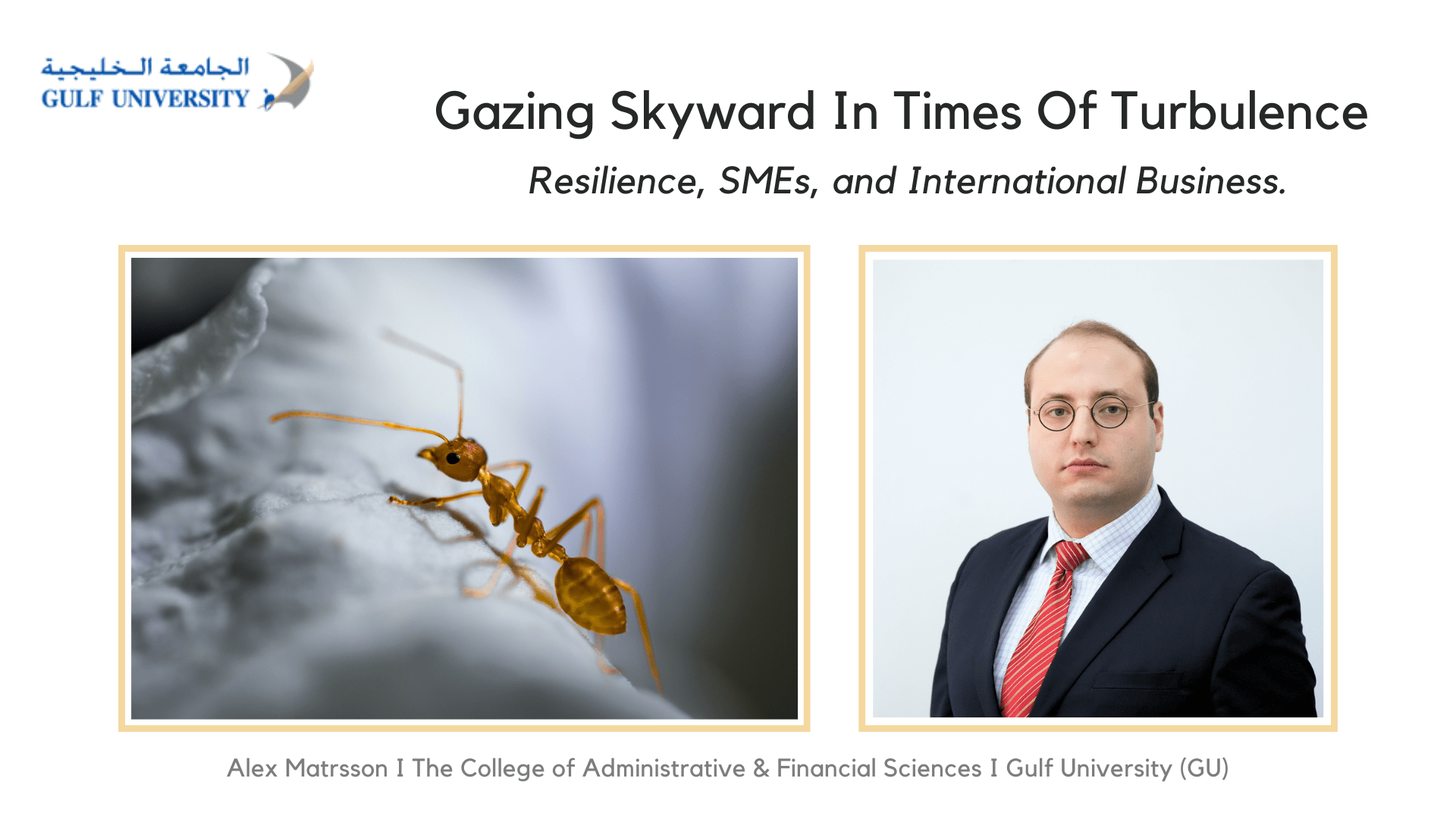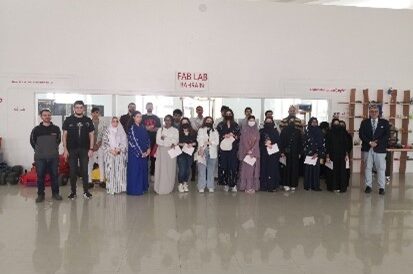Gazing Skyward in Times of Turbulence
Resilience, SMEs, and International Business
When contemplating the meaning of “Business Resilience” one could accentuate that the phrase consists of two words. The former word business is self-explanatory. On average, people all over the world, including non-English speakers, could easily make sense of it and further explain it similarly. On the contrary, the latter word resilience might be harder to comprehend, therefore people might discern it and describe it differently. In 2010, the director of Torrens Resilience Initiative from Flinders University in Australia published a strawman paper to explain the origins, meaning, and utility of Resilience. Arguing that the origin of the word “Resilience” came from the Latin verb “Resilire” which means “rebound or “recoil.” However, the word was introduced to the English language in the 17th Century. Thereafter, Thomas Tredgold was the first scholar to integrate the word into scientific work.
In the year 1818, Tredgold utilized it to explain why certain types of wood can accommodate heavy pressure without breaking. Similarly, and after developing the steam engine, Robert Mallet utilized the concept of Resilience to assess what and how various construction materials could be exploited to maximize the strength and resistance of the Royal Navy’s fighting ships. That is to better withstand severe conditions and attain a robust level of elastic recovery when being subjected to pursuer. From there, the term Resilience continued to be used in engineering and assessing building materials. Although, with time, it became prevalent to implement it in relation to the natural environment, nations, communities, organizations, and individuals. Nevertheless, despite how and when the term is used, the overarching characteristic of Resilience could be narrowed down to accommodating threats, generating positive outcomes, being prepared, desire and commitment for survival, adaptability, gaining experience, interdependency, or collective and coordinated response.
If we come back to the present time and execute a basic google search using the keyword “Business Resilience.” Unsurprisingly, the first listed result will be from the well-known multinational consulting firm McKinsey & Company, arguing boldly that “The world is experiencing a level of disruption and business risk not seen in generations. Some companies freeze and fail, while others innovate, advance, and even thrive. The difference is Resilience”. The COVID-19 pandemic was merely a “wake up call” for all of us, and business disruptions are continuing to become more frequent and increasingly severe. The pandemic made the business world painfully aware of its fragility. We are witnessing a high level of uncertainty and accelerating risk rates—related to advanced digital technology, politics, natural disasters, etc. Therefore, Resilience is seen to be a critical variable that has the absolute property for determining the future of firms worldwide. Our dynamic and unpredictable global business environment necessitates our companies to construct an international business strategy that includes Resilience as a core objective.
International Business and SMEs Resilience has an interrelated relationship. On the one hand, internationalization could be seen as a strategic endeavor that has the potential to foster the sustainable competitive advantage of these vulnerable firms. That is by providing them with access to innovation, knowledge, business networks, and growth opportunities. Consequently, SMEs can enhance their overall dynamic capabilities, and further attain the required capacity to withstand crises. Moreover, export diversification and well-established international network ties could potentially help SMEs reduce their risks. That is through capitalizing on diverse revenue streams and obtaining support from international business partners. On the contrary, achieving SMEs Resilience could allow these firms to improve their performance in the international markets. For instance, through Resilience, SMEs can mitigate language differences, psychic distance, and other socio-cultural barriers that often hinder the success of conducting international business endeavors.
Creating Resilient SMEs is a “must” for ensuring the social and economic well-being of the larger society, worldwide. Business leaders inside these SMEs are required to reconstruct resilient companies. However, that is not an easy task. Firstly, not many business practitioners know what Resilience is and how to work with it. Secondly, the topic has not been taught adequately in business schools. Thirdly, the prevalent business strategies are still dominated by financial performance, with a primary focus on the bottom line. Therefore, despite the importance of Resilience, unfortunately the current number of firms that can design, measure, and achieve resilience is very limited. This creates an urgent enquiry for strategy advocates to systematically generate reliable knowledge within this domain, that is to support extant international business literature, students, researchers, practitioners, and policymakers.




